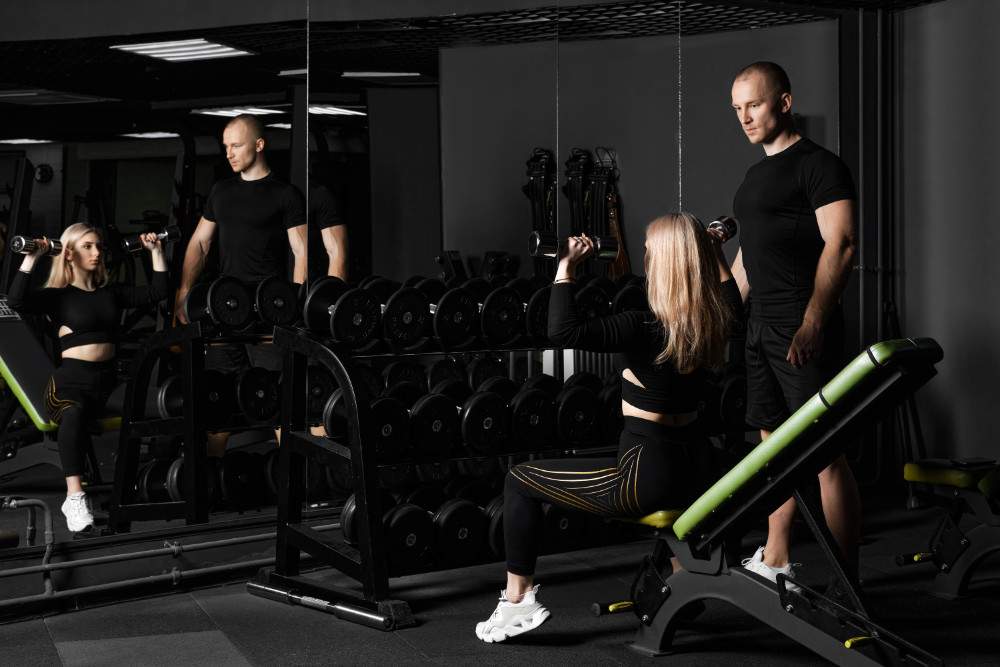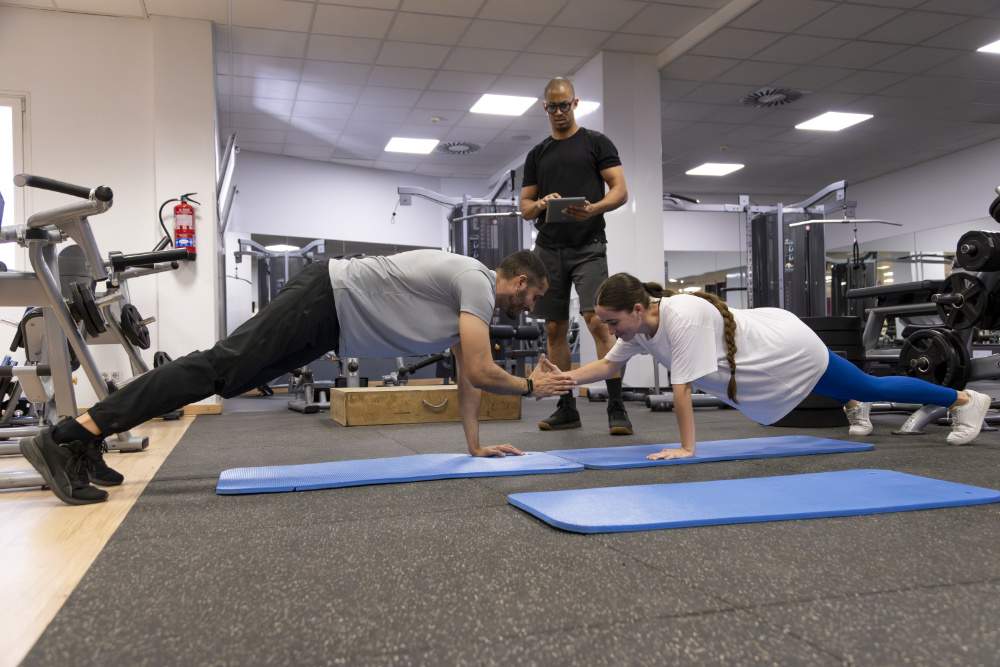Amazing class atmospheres don’t always just happen, but by adopting some strategic techniques you can foster a safe and supportive environment in which participants excel.
In a recent survey of regular group fitness participants, 1 in 3 named community as one of the top three reasons they enjoyed going to classes. Although initial triggers for attending group fitness classes revolved around weight loss and general health, the survey revealed that the key to member retention and successful classes appears to be the ability to foster an environment of group interaction and connection.
We might assume that community in group fitness works because:
1. It creates a safe, supportive space for newcomers within a sometimes uncomfortable environment
2. It inspires healthy competition among members and a drive to better themselves
3. It creates a sense of accountability and routine
4. It improves the energy and fun of the workout by creating a team atmosphere.
In my experience as an instructor, a well-developed group fitness community in your class takes the pressure off you having to provide all the energy needed to make the class successful. Taking complete responsibility for lifting the energy of the group is a surefire route to instructor burnout. A solid community (once created), comes to class with an existing energy, motivation and connection, eagerly awaiting what you have in store. Instead of being energy vampires, they provide the energy, and the instructor’s role then becomes one of a conductor, channeling and refining this energy to deliver an effective and memorable class.
How can you create community?
So if community is such a great thing, how can you go about creating it? We’ve all walked into �?that’ class. You know, the one where no one dares to look at each other, and all eyes are on you in what seems like an angry silence while they sum you up and begin the judgement process. This is one of the most intimidating environments for even seasoned instructors. You may find yourself questioning your talent, your choreography or even why these people are here every week when they look so unhappy. Where do you start the seemingly impossible task of helping these people connect?
Talk to your participants
Establishing a connection from the very start of the class is the key. Talk to your class members. I mean really talk to them. Start 15 minutes before the class by standing outside the door with them, introducing yourself and asking their names. You won’t remember all of them, but people forgive that if you’ve shown that you care by taking the time to ask them initially.
Identify newcomers
When you open the class, introduce yourself again. If you’ve spent enough time talking to them outside then you’ve probably identified the newbies and already screened them for injuries or conditions. I like to do another check once the class has started by asking �?Is there anyone else brand new to class today that I haven’t already spoken to?’ If someone says yes, then I jump off the stage, go up to them and quietly check if they are new to exercise and have any injuries. I also like to let them know that if at any point during the class they are uncomfortable with a movement or need any type of help, to raise their hand for assistance.
Reassure
I like to reassure them that they don’t have to get everything perfectly right (it is their first time after all) and what’s important is that they do their best and don’t give up. I also repeat this to the wider group in my introduction at the start of every class. We strike a deal and I don’t start until they respond affirmatively. This might appear to be a somewhat lengthy process, especially if there is more than one new person, but it only takes a couple of minutes and immediately creates a personal connection between you and the new member.
Acknowledge class regulars
It’s also important to acknowledge the regular members. Where the program you’re delivering permits, get off the stage and get amongst the crowd. General motivational statements to the group are great, but using names and appropriate touch techniques will really lift member motivation to new heights. Using names also informally introduces participants to the rest of the group. Robert becomes the guy who always makes it to the end of the 3-minute plank, Sara always kills it on the push-ups and Denise does all her repetitions with perfect control. In acknowledging each member publicly you start creating a tangible identity for each member as part of a larger group. Others can connect with these people through the story you tell and become part of the special world within the studio.
Know thy neighbour!
Another technique that can be employed in most classes includes asking members to say hello to their neighbours before the class starts. This can be a little awkward to begin with, but the more you persist, the more it becomes the norm and the barriers start to dissolve.
Teamwork and interaction
Using partner and team work in your class also works well to break down invisible barriers, especially when the members of the team need to work with each other to complete the workout. Other techniques such as inviting members to join you on the stage or provide demonstration to the group can again take the focus off you as the sole source of all energy and teach your class how to start looking to each other for additional motivation and support.
Gym ambush
Lastly, one of my favourite tactics (because I might forget a name but I never forget a face) includes a little gym ambushing. If you see someone on a treadmill or bike that has done one of your classes previously, use sensitivity to determine whether it’s appropriate to approach them. If it is safe to do so, go up to them and say hi. You might ask them to remind you of their name, talk about anything that presents and casually ask when you’ll be seeing them back in class. This is the ultimate personal connection. It demonstrates that you saw them, you remembered them, they are an important part of the class and that there is someone looking out for them.
Not all of these tactics will work for all programs. Some programs promote a culture where the instructor cannot leave the stage, whereas others allow a lot more flexibility. But regardless of the type of program you are teaching, the key is to lead by example and always be genuine, authentic and open – a real person. The more you can do this, the more you provide your members with permission to show up to class as themselves. The result? A safe environment where members can be proud of their differences and curious about each other’s; a group that becomes one, complimenting and completing itself with its individual differences. This is how the community groundwork is completed.
In my personal experience, communities work in group fitness because everybody wants to be somebody, everybody wants to be seen and everybody wants to feel a part of something. As humans, we have an innate desire to be in relationships with each other. As long as the group is managed with sensitivity and its process is allowed to unfold organically without control or set expectations, people will eventually connect. Even those stone cold faces that stare back at you from the front row every week will eventually open up with a little nurturing – and these are the people who often end up being the biggest community advocates.
So whatever your genre, I challenge you to list the ways you can begin role modelling community within your classes. Try them out for a month, and see what happens. You might just find your classes become the most popular on the timetable.
Caroline Hynes is an experienced fitness professional currently employed as an instructor, teacher, tutor and group fitness coordinator within the industry. With a passion for group fitness and education, she is committed to doing all she can to see group fitness continue to thrive through the development and education of current and future fitness instructors.


